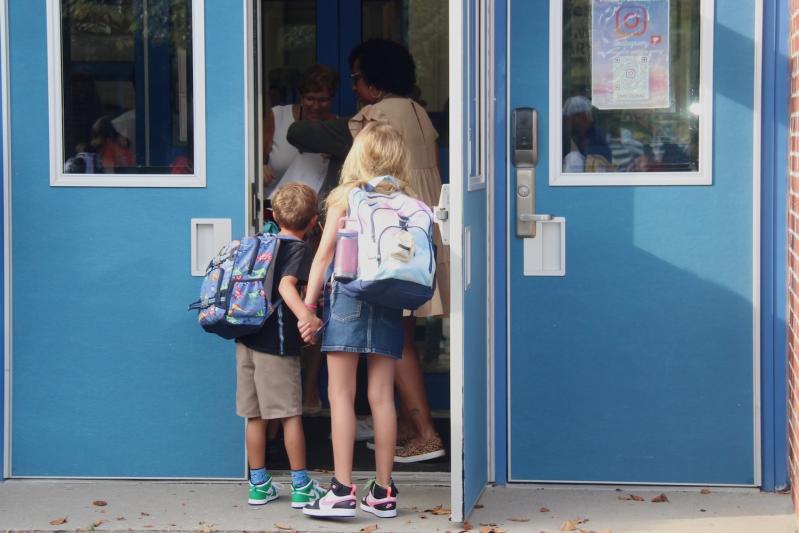In the East Hampton School District, which started its own in-house universal prekindergarten program during the 2018-19 school year, the prekindergarten classes may be shrinking in size but the kids are coming in with more educational needs than ever, administrators said last week.
Students are entering the program with less “background knowledge” — meaning overall skills and knowledge, such as the ability to identify animals and seasons — and need more help with basic tasks such as putting on their jackets. They are having a harder time listening and following directions and are having more trouble with self-regulation and coping with difficult situations.
Karen Kuneth, the principal of the John M. Marshall Elementary School, explained during a Jan. 17 school board meeting that this qualitative analysis came out of a request to her prekindergarten teachers to reflect on the students’ preparedness from year to year.
“This is all anecdotal,” she said, “but [the teachers] are feeling there is less exposure to these things in the home than there was five years ago.”
As many as 16 of the district’s 58 prekindergarten students, or about 27.5 percent, at present qualify for at least one type of special education service. Last year, about 30 percent, or 15 out of 50 children, qualified. Most often, Ms. Kuneth said, the children need speech therapy and do not have full individualized education plans, or I.E.P.s, which are developed after evaluating the students.
Those numbers are up from 10.3 percent (7 of 68 students) in the 2018-19 school year and 7.4 percent (5 of 68 students) in the 2019-20 school year. For the 2020-21 school year, data was not available due to the Covid-19 pandemic, and for the 2021-22 school year, 10 percent of students (6 out of 60) were receiving special education services.
“Classes are smaller, needs are higher,” said J.P. Foster, the school board president.
This does not mean the program is unsuccessful. The children are making progress every day, Ms. Kuneth said. The curriculum is thematic, which means skills are taught through the lens of a different theme every month — for example, the four seasons, outer space, healthful foods. Classes are staffed with a teacher, a teaching assistant, and a part-time paraprofessional. They regularly have “specials” such as art, Spanish-language lessons, and gym, and they have lunch and morning and afternoon snacks daily. Project Most even offers after-school care for prekindergarten students.
Sara Smith, the East Hampton High School principal and mother of a John Marshall student who went through the prekindergarten program, chimed in to say, “It was outstanding.”
Administrators will soon be able to access quantitative data, not just anecdotal information. Ms. Kuneth said teachers are being trained on a new evaluation system, in which students will be assessed in an age-appropriate way, once at the beginning of the year, once in the middle, and once at the end.
“We’ll be able to see those skills when students come in, and then see their growth,” she said. “That assessment will start next year.”
The conversation ultimately turned to whether it would be appropriate to add a “pre-K 3” class, an extension of the program in a half-day format for 3-year-olds. Locally, the Amagansett and Bridgehampton School Districts offer such a program. Adam Fine, the East Hampton superintendent, stressed that it is not in the works for the 2023-24 school year, but rather for the start of 2024-25. The main considerations are whether there’s a need, how to pay for it, and designating classroom space for it, he said.
“We could even start two sections in one room and see what the community buy-in is,” Ms. Kuneth said, “and expand to four sections in two rooms.”
Administrators agreed to explore such a program.
“We have so many working parents, it’s wrong for these kids to be isolated,” said John Ryan Sr., a school board member. “If we can get them into school, I think we should do it.”

